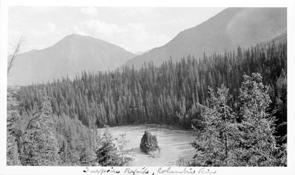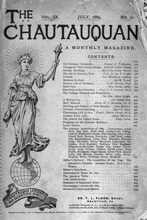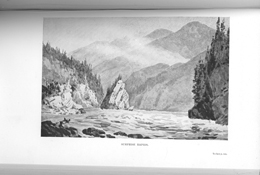… The pole had caught in the binding rope, and loosening this I tried to paddle a little but a bend combined with a sharp bit of rapid showed me how little I could do. We were swept violently against the rocks on shore and my pole did not even soften the shock. Beyond this was calmer water and I managed to paddle her into one eddy where we tied her to a tree. We went about 4 miles in, as we estimate, 15 or 20 minutes. We landed none too soon, for S was blue & shuddering with cold and could not have clung on much longer. We were bewailing the loss of our packs, when something black was seen under the raft. It turned out to be the packs in their waterproofs hanging precariously from their slender straps fastened to the wire. The blow on the rock had nearly but not quite torn them loose and they hung all to one side. They may have saved our lives by acting as ballast and keeping the raft from turning over & over.”
— Notebook 10 1888, [pages 141— 155]





